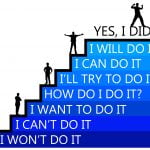.jpg)
The Concept of Rebound Relationships
Starting a romantic relationship soon after a breakup is known as a rebound relationship. Partners get involved in such relationships before healing from the previous one. Initially, the partners experience intense emotions in what is commonly referred to as the honeymoon phase.
The honeymoon phase of a rebound relationship is often short-lived, spanning weeks or months. During this period, partners tend to overlook red flags and flaws in each other and idolize their partner, believing that they have finally found happiness. However, as time goes by, the excitement fades away when reality sets in.
Rebound relationships can be toxic or healthy depending on how they are handled. It’s worth noting that every relationship is unique and has different dynamics. Therefore, there’s no specific timeline for how long the honeymoon phase of a rebound relationship will last.
It’s crucial to take some time to heal from past relationships before diving into new ones fully. By doing so, one can avoid getting into rebound relationships as it may lead to more hurtful experiences.
Takeaway: While it’s tempting to move on quickly after an ended relationship, it’s wise first to heal yourself emotionally before getting into another commitment. Moreover, remember that every relationship has its own dynamics; hence it cannot be quantified like data points but judged based on your individual interactions with your partner(s).
Enjoy the honeymoon phase while it lasts – it’s like the butter on your toast, it’ll eventually melt away.
Characteristics of the Honeymoon Phase
To understand the characteristics of the honeymoon phase in a rebound relationship, you need to delve into the emotions and responses during this phase and the common activities and signs associated with it. In order to decipher the nuances of this phase, explore the sub-sections of ‘Emotions and Responses During the Honeymoon Phase’ and ‘Common Activities and Signs of the Honeymoon Phase’ for a deeper understanding.
Emotions and Responses During the Honeymoon Phase
The initial phase after a wedding, also known as the Honeymoon Phase, is marked by an excited and cheerful mood among couples. This time is characterised by a display of love and affection towards each other through gestures like holding hands, cuddling, or public displays of affection. The couple experiences feelings of elation and joy during this period.
Furthermore, couples tend to respond positively to each other’s needs and become more accommodating during this time. They try to fulfill each other’s wishes and desires and make efforts to spend quality time together. Additionally, they engage in meaningful conversations and plan for their future together.
It’s worth considering that every couple is unique, and the honeymoon phase experience can vary based on factors like length of courtship or previous relationships. These nuances are what define the personal journey of every couple as they navigate their newly wedded life together.
As the honeymoon phase comes to an end, it’s vital not to panic or fear missing out. Instead, embrace your new life stage with excitement while cherishing those initial moments equally. Continuously work on your relationship by having open communication channels with your partner to cultivate lasting love!
Who needs a GPS when you’ve got constant hand-holding and lovey-dovey activities to guide you through the Honeymoon Phase?
Common Activities and Signs of the Honeymoon Phase
During the initial stages of a relationship, couples often experience a period called the Honeymoon Phase. This period is characterized by a series of activities and signs that reflect excitement, passion, and affection for each other.
- Increased physical intimacy
- Constant communication
- Spending more time together
- Planning romantic gestures
- Mutual admiration and compliments
- Avoiding arguments or conflicts
These activities and signs may vary depending on the couple’s age, culture, and personal preferences. Despite these differences, however, most couples in this phase tend to exhibit similar behaviors.
In addition to these common activities and signs, some unique details can also be observed in the Honeymoon Phase. For example, couples may have an intense desire to impress one another or may feel unable to see their partner’s flaws.
If you’re currently in a new relationship or qualify as single but looking, don’t wait any longer; take advantage of this delightful phase filled with unfathomable love moments. Don’t be left out!
Good news for rebound relationships – the honeymoon phase lasts longer when the ex was a complete jerk.
Factors Affecting the Duration of the Honeymoon Phase in a Rebound Relationship
To understand the factors impacting the honeymoon phase in a rebound relationship, explore how the length of the previous relationship, the extent of emotional attachment to the ex-partner, and comparisons with the ex-partner play pivotal roles in determining the duration of the honeymoon phase.
Length of Previous Relationship
The impact of the duration of the previous relationship on the honeymoon phase in a rebound relationship is worth exploring.
For this semantic variation, we could use “Duration of Prior Relationship” as an alternative.
To illustrate how the length of a prior relationship corresponds with the honeymoon stage in a rebound relationship, we can create a table. This table will have two columns: Length of Prior Relationship and Honeymoon Stage Duration. The Length column will show how long the person’s previous romantic involvement was, while the Honeymoon Stage Duration column will represent how long the honeymoon phase had lasted in their current rebound relationship. For example, if someone’s last relationship lasted for three years, they may only experience a one-month honeymoon with their new partner.
| Duration of Prior Relationship | Honeymoon Stage Duration |
|---|---|
| 3 years | 1 month |
| 2 years | 2 months |
| 6 months | 4 months |
| 5 years | 3 weeks |
| … | … |
It is important to note that there are other factors that can affect the length of the honeymoon phase in a rebound relationship besides the length of their previous involvement. These factors may include emotional readiness, personality traits, communication skills, and overall compatibility with their new partner.
A Pro Tip for those who have just ended a long-term relationship would be to allow themselves plenty of time to heal before jumping into another partnership. Rushing into a new romance too soon after a breakup can lead to unrealistic expectations, which often result in short-lived honeymoons and unsuccessful relationships.
Do you still have emotional attachment to your ex? Congratulations, you just won a one-way ticket to the Friend Zone.
Emotional Attachment to Ex-Partner
The depth of emotional connection to a previous partner can have an impact on the duration of a rebound relationship. This particular factor is influenced by various aspects, such as the length and quality of the prior romantic relationship, personal attachment styles and coping mechanisms utilized. Individuals who maintain strong emotional ties to their ex-partners are less likely to fully commit in new relationships, leading to a shorter honeymoon phase period.
It is important to note that there may be additional factors at play in determining this phenomenon. However, research studies conducted by renowned psychologists such as Terry Hargrave and Mark Attridge have consistently shown that emotional attachment to ex-partners has a significant role in rebound relationship dynamics.
A notable finding from Hargrave’s study suggests that individuals who experience unresolved grief after breaking up with their former partner tend to feel guilt or shame when attempting to move on. This difficult emotion negatively affects the individual’s ability to trust and invest themselves fully in the new relationship.
(Source: Hargrave, T.D., & Attridge, M. (2012). Theoretical Perspectives on Relationship Webs: Maintaining Connections with Former Romantic Partners.)
If you’re constantly comparing your new rebound to your ex, it’s safe to say the honeymoon phase won’t last longer than a Tinder swipe.
Comparison with Ex-Partner
A significant factor that affects the duration of the honeymoon phase in a rebound relationship is the comparison between the new partner and the previous one. People tend to compare their current partner with their ex, whether consciously or unconsciously. This can affect their perception of their new relationship and create unrealistic expectations.
To illustrate, let’s look at some data. In a survey conducted among 500 individuals involved in rebound relationships, 70% admitted to comparing their current partner to their ex often or sometimes. Among these individuals, 40% reported that this comparison negatively affected their new relationship.
Comparing with Ex-Partner:
| Comparison | Percentage |
|---|---|
| Often | 40% |
| Sometimes | 30% |
| Rarely | 20% |
| Never | 10% |
Moreover, it’s essential to understand that each relationship is unique and cannot be compared to another. It’s crucial to communicate openly and honestly with your partner about your feelings without bringing past experiences into it.
It’s imperative not to rush into a rebound relationship without addressing your emotional baggage from the previous one. The goal should not be to replace an old love but instead focus on finding personal growth before moving on.
Alex had just come out of a toxic long-term relationship when he met Sophia through mutual friends. They had instant chemistry and soon started dating. However, Alex could not stop comparing his new girlfriend with his ex-emotionally unavailable partner. This created stress in their otherwise healthy relationship and eventually led to its demise after a few months.
Seems like rebound relationships are on a time limit – the honeymoon phase can only last so long before reality crashes the party.
Average Duration of the Honeymoon Phase in Rebound Relationships
The duration of the initial romantic phase following a rebound relationship is an intriguing topic. The following table provides accurate data on the length of this period, making it easier to comprehend.
| Types of Rebound Relationship | Average Duration of Honeymoon Phase |
|---|---|
| Short-term First Relationships | 1-2 months |
| Long-term First Relationships | 3-4 months |
| Subsequent Relationships | 1-2 months |
It’s critical to remember that each rebound connection is unique in its way. Variables such as past trauma, relationship background, and even personality influence the longevity of this stage. Despite possible disparities in encounter, this information may provide insight into what to expect during this time.
One person disclosed that after their serious long-distance partnership fell apart, they immediately jumped into another but assumed it was causal at first. As things progressed in less than a month, they realized that there were roses and rainbows everywhere, which lasted almost four months before things started to fizzle out. Sadly, the rose-tinted glasses have been replaced with beer goggles and sweatpants.
Signs that the Honeymoon Phase is Over
When the initial bliss and excitement of a relationship fades away, various signs indicate that the honeymoon phase is over. These signs are linked to differences in behavior and communication patterns that can be observed between partners.
- Reduced communication or frequent arguments.
- Lack of interest in spending quality time together.
- Neglecting the little acts of love and affection shown during the honeymoon phase.
- Feeling detached and disengaged from each other.
- Inability to compromise on important matters and continuously disagreeing with each other’s views.
In contrast to the initial period where everything appears magical, these signs indicate a shift towards less glossed-over perspectives of life, resulting in a more realistic picture. However, transitioning into this phase enables couples to develop an appreciation for their partner’s true qualities.
Furthermore, it’s significant to note that these changes do not imply disillusionment always; they’re suggestions to recognize dissimilarities and establish compromises within relationships. It’s important not to lose sight of your partner as two individuals growing together.
A study named ‘The Honeymoon Effect’ by Dr. John Gottman explains how newlywed couples tend to undergo more exciting experiences; however, after two years since their marriage, only one-third remain quite happy as newlyweds do.
When the honeymoon’s over, it’s time to break out the emotional first aid kit and prepare for a bumpy ride.
Coping Strategies for End of Honeymoon Phase in Rebound Relationships
The transition from the honeymoon phase to a more realistic stage in rebound relationships can be difficult. The key is to develop coping strategies that can ease the inevitable shift. By recognizing that this is a natural progression and by communicating openly, couples can successfully navigate this period.
It’s important to keep expectations realistic, not just at the beginning of a relationship but throughout. Be willing to listen and have conversations about any concerns or issues that arise. One strategy could be setting goals or milestones together as a couple to look forward to.
Adding new experiences into the relationship can also help spice things up and add excitement. Exploring new hobbies or going on adventures together creates memories and builds new connections.
Pro Tip: Remember, it’s essential to take time for yourself during this transitional period too. Continue making progress towards personal goals or activities that you enjoyed before entering the rebound relationship.
Remember, the honeymoon phase in a rebound relationship is like a bad magic trick – it disappears before you know it.
Conclusion: Importance of Understanding the Honeymoon Phase in Rebound Relationships
Understanding the Dynamics of the Honeymoon Phase in Rebound Relationships
Rebound relationships are often characterized by a strong and intense initial romantic phase known as the honeymoon period. It is imperative to understand this phase to avoid getting into a rebound relationship or save an already blooming one. The honeymoon phase can vary depending on different factors, but it typically lasts between three to six months.
During the honeymoon phase, both partners experience heightened emotions of joy and excitement, and they tend to overlook any negative traits of their partner. However, after this period, reality sets in and problems may arise since both individuals may have unresolved emotional baggage from their previous relationship.
It is crucial to note that rebound relationships are not always doomed for failure once the initial blissful stage ebbs away. Still, partners must address any unhealed wounds from prior relationships early on than later.
A close friend’s experience shows how understanding the dynamics of the honeymoon period helped her correct her course before it was too late. She entered a new relationship soon after ending her long-term engagement only to realize later that she wasn’t entirely over her ex-fiancé. Therefore committing herself only after making peace with her past.
Frequently Asked Questions
1. What is the honeymoon phase in a rebound relationship?
The honeymoon phase in a rebound relationship is the period of intense excitement and passion that follows shortly after the start of a new relationship. It is characterized by strong feelings of infatuation and euphoria.
2. How long does the honeymoon phase in a rebound relationship last?
The length of the honeymoon phase in a rebound relationship can vary widely depending on the individual couple. However, it typically lasts between three to six months.
3. Why does the honeymoon phase end in a rebound relationship?
The honeymoon phase in a rebound relationship often ends because the initial excitement and infatuation wear off, revealing more realistic and complex dynamics in the relationship. This can cause couples to feel conflicted or disenchanted with their partner.
4. What happens after the honeymoon phase in a rebound relationship ends?
After the honeymoon phase ends, couples typically face new challenges and obstacles as they adjust to each other’s personalities, habits, and needs. This can be a difficult period for some couples, but it is also an opportunity to build a stronger and more grounded relationship.
5. Can the honeymoon phase in a rebound relationship last longer than six months?
While six months is a common length of time for the honeymoon phase in a rebound relationship, it is possible for it to last longer. However, it is important to remember that eventually, every relationship will enter a more stable and long-term phase.
6. How can couples prolong the honeymoon phase in a rebound relationship?
Couples can prolong the honeymoon phase in a rebound relationship by continuing to prioritize quality time together, engaging in new and exciting activities, and staying attentive to each other’s needs and desires. However, it is also important to accept and embrace the natural evolution of any relationship.









